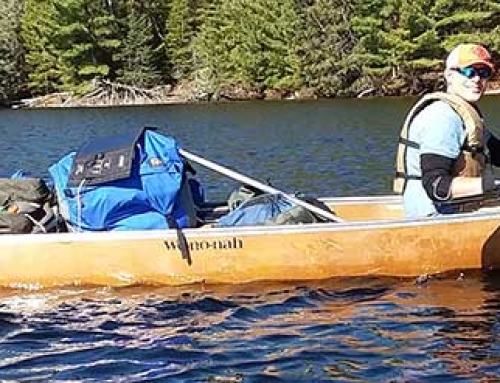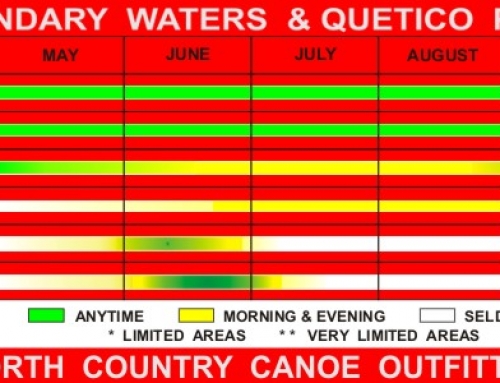The debate on what kind of footware to have, while taking a canoe trip, has probably dragged on since Raddison paddled these lakes in 1660. They carried loads far heavier than our packs could ever be. Their days stretched from dawn to dusk … and they only fished for a change of diet. Since then, finding the perfect footwear has been an ongoing 
These are just our own recommendations, and our reasons why we feel that way. Consider our suggestions, but then make your own call. There are many different ideas on what’s best, but there is some agreement on what not to wear.
What Doesn’t Work
The boots I wore when I climbed Mt Rainier went on only one canoe trip. I found I hate heavy wet boots that don’t drain, and get heavier holding water. After years of abuse, my knees don’t like lifting that weight. Sandals expose the toes too much for our rocky, striated portages. “Footies” are worthless – no protection at all.
What Does Work
I take 2 pair of footwear: canoe/portage shoes, and camp shoes.
Canoe/Portage shoes — These are the main shoes I wear when canoeing and portaging. You will be getting out of the canoe while it is still in the water approximately knee deep. Your feet will get wet when you enter/exit the canoe each time. Advantages to this are: it keeps the canoe from damage on the rocky shores, and you don’t have to lift the canoe and packs as high since they are already at knee level or above. It also keeps you from damaging the canoe when you are placing it back in the water at the end of your portage.
Some first-timers try to be dry-footers. I find it dangerous trying to keep feet dry (jumping to a rock avoid water, etc.). We had one gal break an ankle doing just that. We had told the group not to do it … she did it on the very first portage … and that was the end of the trip for everyone.
As for actual footware, these can range from an old pair of sneakers (which I personally prefer), high tech water shoes, or boots. They should be light enough to swim in if you somehow capsize the canoe.

Some of our customers have used 6″ high leather work boots, high top sneakers, and hiking boots. The main thing for these people is ankle support for the portages. I’ve never had a problem with weak ankles, so I prefer to go with a lower cut. Draining out the water is a big plus. I’ve heard of folks using Jungle Boots. For some reason the Scouts really think this is a good idea, though they are too heavy for me. Besides, back in the 70’s I had to wear them every day “for real in Vietnam” when I wasn’t actually flying a mission (Pilots had to wear leather boots in case of fire. These full-sized leather combat boots are way down the list of recommended footware. ) If they do become your choice, be sure to get American made boots; the imported knock-offs rarely go the distance on a canoe trip.
Camp shoes
— A lightweight pair of hiking boots, sport sandals, or sneakers. Moccasins work well, too. I go to great pains to keep these dry. Once I reach camp, I dry my feet and change into these.
Swimming shoes







